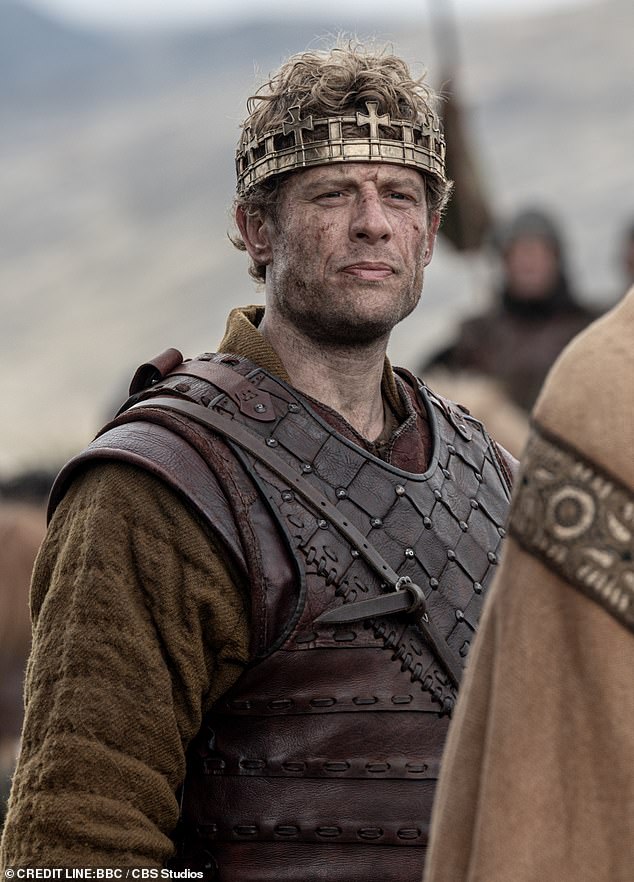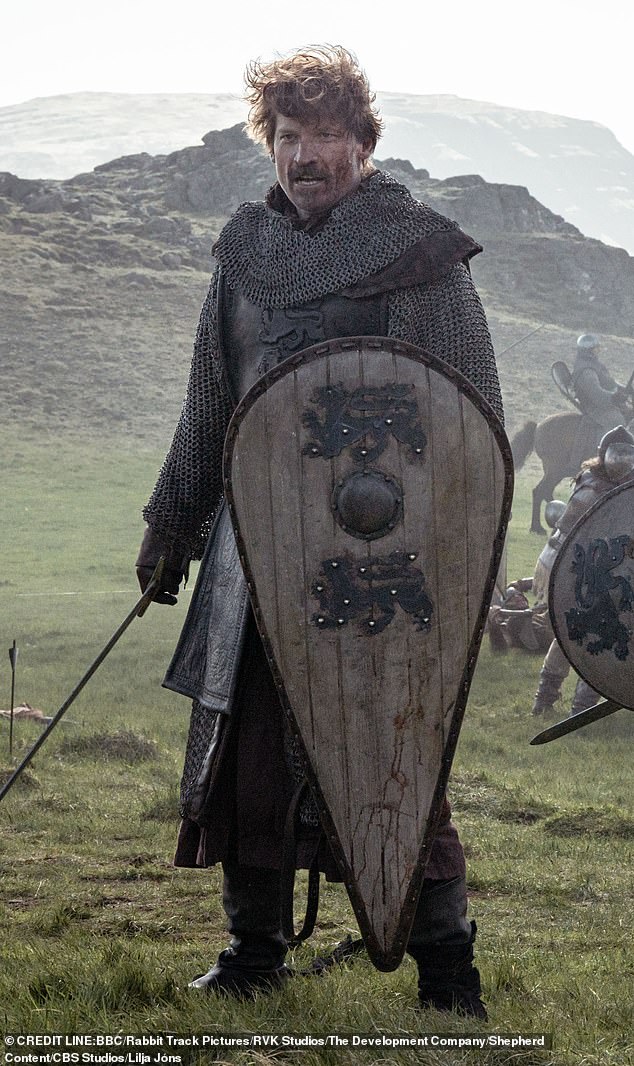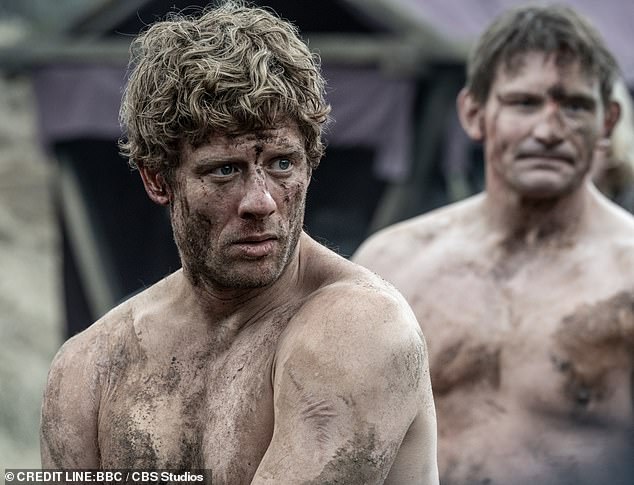An eye for an eye, a nose for a nose… As BBC One’s gore-splattered medieval drama King And Conqueror begins tonight, viewers will see the future King Harold II rip off an enemy warrior’s nose with his teeth.
It’s an unexpected twist on the familiar story of the English monarch who, according to the Bayeux Tapestry, was killed by an arrow through the eye at the Battle of Hastings in 1066.
Nothing in the Tapestry, which is due to be loaned to the British Museum next year, depicts nose-chomping.
But this liberty with the known facts is not an unlikely one, says English Heritage historian Dr Michael Carter: ‘To be a successful ruler in the 11th century, you would have to use psychopathic levels of violence.’
Another shocking scene, though, is based on ‘a load of rubbish,’ Dr Carter warns. Early in the first episode, Harold (played by James Norton) confronts his debauched brother Sweyn, who has been exercising his ‘droit du seigneur’ – the right of a feudal lord to deflower a peasant bride on the night before her wedding.
‘She loved every minute of it,’ boasts Sweyn (Elliot Cowan), before threatening Harold: ‘If father gets to hear about this, I’ll do you harder than I did her.’
The legend of ‘droit du seigneur’ is nonsense, Dr Carter says. The product of ‘mistranslation of sources, and the wild imaginings of historians and antiquarians’.
It ‘absolutely would not have been done’.

A clean-shaven James Norton who plays Harold is seen in King And Conqueror

Nikolaj Coster-Waldau is seen with a moustache that Asterix the Gaul would have been proud to sport
Historical accuracy takes a distant second place to entertainment in this big budget eight-parter, which was filmed not in Sussex where the Norman invasion began, but in Iceland.
A spokesman for the producers said the location, just south of the Arctic Circle, was chosen because ‘its variety of landscapes can represent these different parts of Europe from 1,000 years ago’.
This explanation omits to mention that productions in Iceland can claim a rebate of up to 35 per cent of total costs.
Other details in the show fail to meet even basic historical standards. Houses are shown as half-timbered and tiled, a style far more common in the later part of the Middle Ages and Shakespearean times.
The Cambridge historian Professor Robert Tombs points out that most people before the Norman conquest would have lived in one-room timber huts with thatched roofs.
Harold’s predecessor on the English throne, Edward the Confessor, is played by Eddie Marsan as a half-witted religious obsessive who smiles at the heavens while listening to voices that only he can hear.
In reality, says Professor Tombs, Edward was a wily and energetic man, devoted to hunting: ‘His temperament remained bellicose even after his retirement from active military command in 1052.’

According to historians, it was the Anglo-Saxons who wore facial hair, while the Normans favoured a more severe short-back-and-sides. Pictured: James Norton
Edward ruled for nearly a quarter of a century, though the drama cuts that reign much shorter, and has both Harold and William at the Coronation, glowering at each other.
In fact, William was not present and Harold would have been a mere teenager.
Perhaps the strangest error is with the hairstyles. Norton is clean-shaven. Nikolaj Coster-Waldau, who plays William the Conqueror, has a moustache that Asterix the Gaul would have been proud to sport.
But it was the Anglo-Saxons who wore facial hair, while the Normans favoured a more severe short-back-and-sides – again, easily proven by the Bayeux Tapestry.
None of this should prevent viewers from being carried away by the drama and excitement of King And Conqueror, says Dr Carter.
His advice? ‘Park the pedant!’












